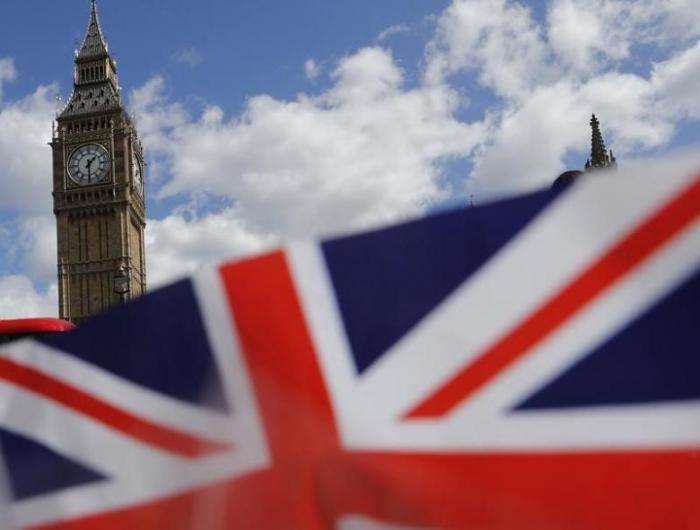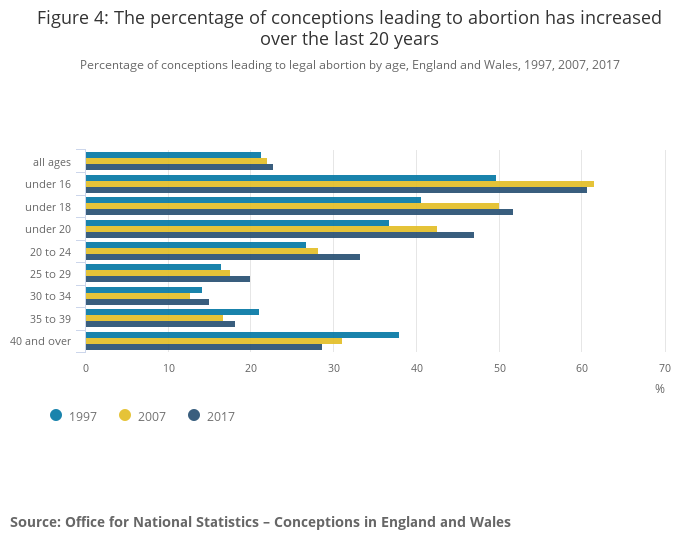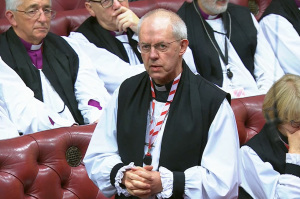A third of pregnancies for women in early 20s aborted in England and Wales

New government data show that nearly one-third of pregnancies among women aged 20 through 24 in England and Wales resulted in abortions in 2017.
The finding comes from data published by the United Kingdom’s Office for National Studies, which found that 33.2 percent of pregnancies for women in their early-20s end in abortion. That number is up about .6 percentage points from 2016.
Overall, 22.7 percent of conceptions in women of all ages in England and Wales resulted in an abortion, which represents an increase of about .9 percentage points from the year before and a 6.5 percent increase since 1997.
The data show a rise in the number of abortions for pregnant women in all age groups, except for girls ages 16 and under.
But even having decreased from 2016, women 16 and under had by far the highest percentage of pregnancies leading to abortion at 60.7 percent in 2017.
The largest year-over-year increase was among women 25 to 29 years old. The number of pregnancies in that age bracket that led to abortion increased to 20 percent.

For women 40 and over, 28.7 percent of their pregnancies led to an abortion as well as 18.1 percent of pregnancies for women aged 35 to 39. For women between the ages of 30 to 34, 15 percent of their pregnancies ended in abortion.
“Compared with 20 years ago, the percentage of conceptions leading to a legal abortion has generally increased for women aged under 30 years, remained stable for women aged 30 to 34 years and decreased for women aged 35 years and over,” ONS notes.
According to the Department of Health and Social Care, 197,533 abortions were performed in 2017. That is the highest level on record since 2008 and a 4 percent increase since 2016.
The department also found that the abortion rate was highest for women aged 20 in 2017 at 29.1 per 1,000 women.
“The specific reasons as to why these abortions are being committed is not reported in the data. However, it can be revealed that in 2017, 98 percent of abortions were carried out under Ground C (social reasons) and 3,314 unborn babies were aborted for possessing a possible disability (Ground E),” the Society for the Protection of Unborn Women noted in a statement.
“Under current law, the doctor performing the abortion does not need to disclose or provide evidence to the parents as to what the possible fetal disability may be.”
Along with the rise in abortions, the new data also show that there has been a “steady rise” over the last several decades in the percentage of conceptions happening outside marriage.
In 2017, 58.7 percent of all conceptions in England and Wales occurred outside of the confines of marriage or civil partnership. By comparison, 51.2 percent of pregnancies occurred outside of wedlock or civil partnership in 1998.
“This trend is mirrored in the percentage of live births occurring outside marriage or civil partnership, which currently stands at 48.1 percent,” an ONS report explains. “The difference between the two figures is because less conceptions outside of marriage or civil partnership result in a maternity. In 2017, only 67.4 percent of conceptions outside marriage or civil partnership resulted in a maternity, compared with 91.4 percent of conceptions within.”
Last month, Health Minister Jackie Doyle-Price attributed the rise in unplanned pregnancies among women in their 30s to the influence of dating apps such as Tinder.
"The growth area of unplanned pregnancies is not teenagers anymore – it’s the thirty-somethings. We talk about the Tinder generation,” Doyle-Price explained at a conference, according to The Telegraph. “What tends to happen, is you have a woman leave one relationship and then play the field again – entering the market again. … That’s when the unplanned pregnancies tend to happen. I think there’s an education point there, which is ‘please continue to look after your fertility.’”
In the United States, government data show that the abortion rate continues to decline. With the last available Centers for Disease Control data coming from 2015, it shows a 2 percent decline in the number of abortions from 2014.
Additionally, the CDC claims that there has been a 24 percent decline in the number of abortions from 2006 to 2015 and that the number, rate and ratio data on abortions in the U.S. have reached their lowest points ever in the period of analysis.
Yet, some critics warn that the data are indicative of “weak abortion-reporting requirements in the U.S.”
“The CDC doesn’t have the authority to compel states to report abortion numbers and as a result, unsurprisingly, the data are incomplete,” wrote political scientist Michael J. New last November.
“California, Maryland, and New Hampshire all failed to report abortion data for 2015. In fact, California has not reported any abortion data to the CDC since 1997. What’s more, while the CDC has already released 2017 data on a range of public-health topics, its abortion numbers are far behind; there is almost always a lag of more than two years before abortion data is released.”
Follow Samuel Smith on Twitter: @IamSamSmith
or Facebook: SamuelSmithCP





























